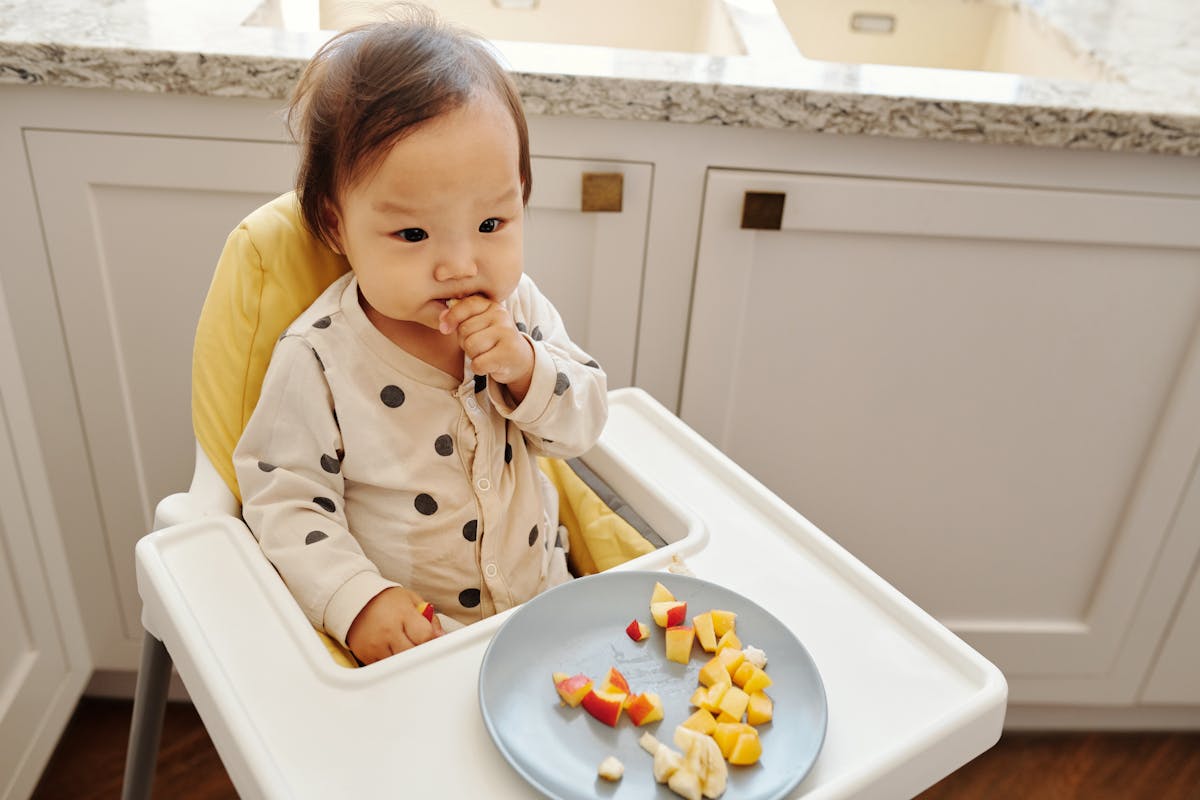Mangoes are a favorite of the taste buds. They are said to be one of the most ambrosial fruits. And, as we have already pointed out, parents question how beneficial a mango can be to their babies. So, can babies eat mango?
In this article, you will understand its benefits and discover the appropriate age to introduce this food. Discover the necessary care, see tips on how to give fruit to your baby and even learn some simple recipes. Keep reading to learn!
The nutritional benefits of mango
Can babies eat mango? A tropical fruit of juicy succulence, soft on the mouth. It is also bestowed with several vitamins, which nurture the growth of the child. Of these, vitamin C is a vitamin necessary for the proper absorption of iron so that there would be no cases of anemia.
The fruit gives the required vitamin A that keeps eyes and skin healthy as well as diet fiber that promotes the digestive system. Coupled with antioxidants in the fruit, it prevents cell damage and gives off potassium required for muscle activity and the heart.
How early can a baby take mango?
The recommendations of the World Health Organization suggest that once born, a child should be fed only on breast milk until attaining the age of six months, whereby other kinds of food may be introduced. Thus, a 6-month-old baby will be enjoying mangoes.
How to offer mango to your baby: necessary precautions
Although it is a healthy fruit, it is important to take some precautions into account. To ensure a safe introduction, check the texture of the fruit, its allergenic potential and the quantity. See below how to offer mango to your baby.
Peel off the skin and fiber from the fruit. Make sure the mango is nice and soft, mushed or chopped into pieces small enough to go into your baby’s mouth. Introduce him/her gradually, on how he/she takes it. Start with a little amount and gradually increase it as your baby accepts and tolerates.
A few children might be allergic to mangoes. Also, watch out for allergy symptoms like rashes, itchy, or swelling area of the mouth. In this case, seek advice from a pediatrician.
Do mangoes replace other fruits for the diet of the baby?
Mango is safe for a baby to take, and it’s fine to add it to the diet, but not instead of other fruits, since, all things considered, they have nutritional values that are valuable to different aspects of their development.
For example, bananas are foods rich in potassium, which is essential for muscle and heart health; oranges provide vitamin C, which strengthens the immune system ; and apples are a good source of fiber, which helps with digestion.
Different fruits ensure that your baby gets a broad scope of necessary vitamins and minerals. So, it is very important to introduce this variety in their diet.
Mango simple and healthy recipes for babies
In addition to being a versatile fruit, babies can be fed with mangoes mixed with other ingredients in healthy dishes . First and foremost, take care to choose ripe mangoes to ensure quality.
Mangoes are therefore an excellent choice for diversifying your baby’s diet. After learning at what age your baby can eat mangoes and doing some simple tests, you can start thinking about variations of the fruit.
Here are some ideas on how to include mango in your baby ‘s diet in a healthy way . These are simple recipes that help to diversify your child’s diet.
Mango puree
Cut a ripe mango into pieces and boil or mash it until perfectly smooth. Feed it when cool to your little one. It can be served pureed either alone or mixed with other fruits, for example, banana or pear.
Mango and yogurt porridge
Combine pure mango with plain, unsweetened yogurt. This combination helps give a creamy consistency and adds probiotics to the diet that help the gut of the baby.
Mango popsicle
Mix the ready mango in a blender until you get the puree. Pour that puree into popsicle molds and freeze for a few hours. On scorching summer days, those popsicles refresh as well as act as healthy treats. Perhaps they also can help ease itching when your little one has that sore, sensitive gum situation of her first teeth coming through.
Mashed mango with other fruits
Combine mango with other fruits for introduction , such as banana or pear. This creates a blended puree that offers a variety of flavors and nutrients for your baby.
Stick-shaped mango
Slice long, thin sticks from mango that your baby can grasp and chew on. This can sometimes be useful for your little one to start to chew with.
Mango Smoothies
Make smooth smoothies with mango and using breast milk, infant formula, or plain yogurt. The consistency must suit the age of your baby.
Mango with oats or spinach
Mix cooked oatmeal with mango puree to create a healthy, fiber-based baby food. Then again mix mango puree with spinach puree to develop an iron- and vitamins-rich baby food.
